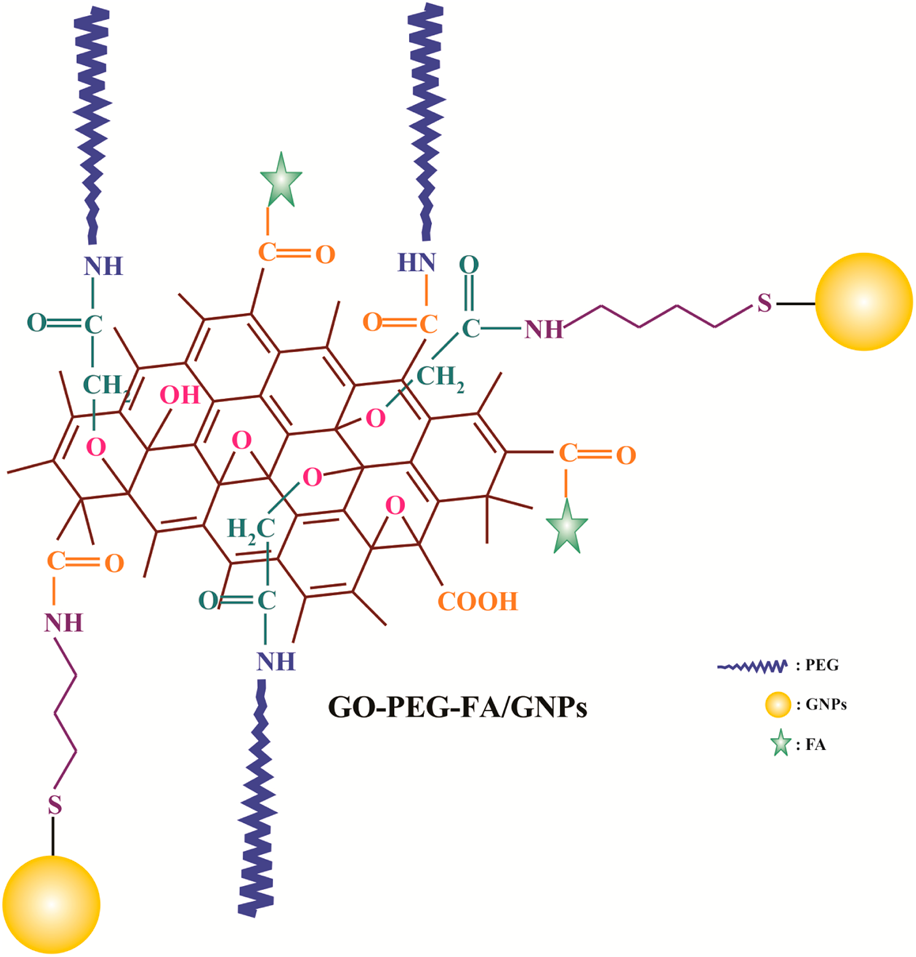Crossref Citations
This article has been cited by the following publications. This list is generated based on data provided by
Crossref.
Mathew, Twinkle
Sree, R. Aishwarya
Aishwarya, S.
Kounaina, Khan
Patil, Anirudh G.
Satapathy, Pankaj
Hudeda, S.P.
More, Sunil S.
Muthucheliyan, K.
Kumar, T. Naveen
Raghu, Anjanapura V.
Reddy, Kakarla Raghava
and
Zameer, Farhan
2020.
Graphene-based functional nanomaterials for biomedical and bioanalysis applications.
FlatChem,
Vol. 23,
Issue. ,
p.
100184.
Mahalunkar, Sneha
Kundu, Gopal C.
and
Gosavi, Suresh W.
2020.
Folated curcumin-gold nanoformulations: A nanotherapeutic strategy for breast cancer therapy.
Journal of Vacuum Science & Technology B,
Vol. 38,
Issue. 5,
p.
050802.
Neha Desai
Momin, Munira
Khan, Tabassum
Gharat, Sankalp
Ningthoujam, Raghumani Singh
and
Omri, Abdelwahab
2021.
Metallic nanoparticles as drug delivery system for the treatment of cancer.
Expert Opinion on Drug Delivery,
Vol. 18,
Issue. 9,
p.
1261.
Taylor, Katherine
Tabish, Tanveer A.
and
Narayan, Roger J.
2021.
Drug Release Kinetics of DOX-Loaded Graphene-Based Nanocarriers for Ovarian and Breast Cancer Therapeutics.
Applied Sciences,
Vol. 11,
Issue. 23,
p.
11151.
Sayadnia, Sahar
Arkan, Elham
Jahanban-Esfahlan, Rana
Sayadnia, Soughand
and
Jaymand, Mehdi
2021.
Thermal-responsive magnetic hydrogels based on Tragacanth gum for delivery of anticancer drugs.
Journal of Polymer Research,
Vol. 28,
Issue. 3,
Wei, Liying
Li, Guo
Lu, Taicheng
Wei, Yiming
Nong, Zhenzhen
Wei, Mei
Pan, Xin
Qin, Qixiao
Meng, Fayan
and
Li, Xuehua
2021.
Functionalized Graphene Oxide as Drug Delivery Systems for Platinum Anticancer Drugs.
Journal of Pharmaceutical Sciences,
Vol. 110,
Issue. 11,
p.
3631.
Padalia, Hemali
and
Chanda, Sumitra
2021.
Synthesis of silver nanoparticles using
Ziziphus nummularia
leaf extract and evaluation of their antimicrobial, antioxidant, cytotoxic and genotoxic potential (4-in-1 system)
.
Artificial Cells, Nanomedicine, and Biotechnology,
Vol. 49,
Issue. 1,
p.
354.
Niazi, Mostafa
Alizadeh, Effat
Zarebkohan, Amir
Seidi, Khaled
Ayoubi‐Joshaghani, Mohammad Hosein
Azizi, Mehdi
Dadashi, Hamed
Mahmudi, Hossein
Javaheri, Tahereh
Jaymand, Mehdi
Hamblin, Michael R.
Jahanban‐Esfahlan, Rana
and
Amoozgar, Zohreh
2021.
Advanced Bioresponsive Multitasking Hydrogels in the New Era of Biomedicine.
Advanced Functional Materials,
Vol. 31,
Issue. 41,
Seidi, Khaled
Ayoubi-Joshaghani, Mohammad Hosein
Azizi, Mehdi
Javaheri, Tahereh
Jaymand, Mehdi
Alizadeh, Effat
Webster, Thomas J.
Yazdi, Amirhossein Ahmadieh
Niazi, Mostafa
Hamblin, Michael R.
Amoozgar, Zohreh
and
Jahanban-Esfahlan, Rana
2021.
Bioinspired hydrogels build a bridge from bench to bedside.
Nano Today,
Vol. 39,
Issue. ,
p.
101157.
Fu, Bo
Tao, Can
Chen, Nian
Lin, Jie-Rou
and
Zhao, Ping
2021.
ZnO QD covalently coated, GSH/pH dual-responsive drug delivery system for chemotherapeutic/ionic synergistic therapy.
Journal of Drug Delivery Science and Technology,
Vol. 66,
Issue. ,
p.
102908.
Soleimani, Khadijeh
Arkan, Elham
Derakhshankhah, Hossein
Haghshenas, Babak
Jahanban-Esfahlan, Rana
and
Jaymand, Mehdi
2021.
A novel bioreducible and pH-responsive magnetic nanohydrogel based on β-cyclodextrin for chemo/hyperthermia therapy of cancer.
Carbohydrate Polymers,
Vol. 252,
Issue. ,
p.
117229.
Rai, Ayushi
Noor, Saba
Ahmad, Syed Ishraque
Alajmi, Mohamed F.
Hussain, Afzal
Abbas, Hashim
and
Hasan, Gulam Mustafa
2021.
Recent Advances and Implication of Bioengineered Nanomaterials in Cancer Theranostics.
Medicina,
Vol. 57,
Issue. 2,
p.
91.
Mortezaee, Keywan
Narmani, Asghar
Salehi, Majid
Bagheri, Hamed
Farhood, Bagher
Haghi-Aminjan, Hamed
and
Najafi, Masoud
2021.
Synergic effects of nanoparticles-mediated hyperthermia in radiotherapy/chemotherapy of cancer.
Life Sciences,
Vol. 269,
Issue. ,
p.
119020.
Palamà, Ilaria Elena
and
Leporatti, Stefano
2022.
Nanomedicine in Cancer Targeting and Therapy.
Journal of Personalized Medicine,
Vol. 12,
Issue. 8,
p.
1312.
AlSawaftah, Nour M.
Awad, Nahid S.
Pitt, William G.
and
Husseini, Ghaleb A.
2022.
pH-Responsive Nanocarriers in Cancer Therapy.
Polymers,
Vol. 14,
Issue. 5,
p.
936.
Esmaeili, Yasaman
Seyedhosseini Ghaheh, Hooria
Ghasemi, Fahimeh
Shariati, Laleh
Rafienia, Mohammad
Bidram, Elham
and
Zarrabi, Ali
2022.
Graphene oxide quantum dot-chitosan nanotheranostic platform as a pH-responsive carrier for improving curcumin uptake internalization: In vitro & in silico study.
Biomaterials Advances,
Vol. 139,
Issue. ,
p.
213017.
Munir, Tariq
Imran, Muhammad
Muzammil, Saima
Hussain, Abdul Ahad
Fakhar-e Alam, Muhammad
Mahmood, Arslan
Sohail, Amjad
Atif, Muhammad
Shafeeq, Sulman
and
Afzal, Muhammad
2022.
Antimicrobial activities of polyethylene glycol and citric acid coated graphene oxide-NPs synthesized via Hummer’s method.
Arabian Journal of Chemistry,
Vol. 15,
Issue. 9,
p.
104075.
Abdelfattah, Ahmed
Aboutaleb, Ahmed E.
Abdel‐Aal, Abu‐Baker M.
Abdellatif, Ahmed A.H.
Tawfeek, Hesham M.
and
Abdel-Rahman, Sayed I.
2022.
Design and optimization of PEGylated silver nanoparticles for efficient delivery of doxorubicin to cancer cells.
Journal of Drug Delivery Science and Technology,
Vol. 71,
Issue. ,
p.
103347.
Rodriguez-Montelongo, Sayma A
Gonzalez-Maldonado, Mario A
Silva-Ramirez, Ana S
Castillo Martin del Campo, Claudia G
Ruiz, Facundo
and
Gonzalez-Ortega, Omar
2022.
Graphene oxide and reduced graphene oxide nanocomposites grafted with hollow gold nanoshells as photothermal agents.
Journal of Composite Materials,
Vol. 56,
Issue. 9,
p.
1453.
Singh, Rajeev
Alshaghdali, Khalid
Saeed, Amir
Kausar, Mohd Adnan
Aldakheel, Fahad M.
Anwar, Sadaf
Mishra, Debabrata
and
Srivastava, Manish
2022.
Prospects of microbial-engineering for the production of graphene and its derivatives: Application to design nanosystms for cancer theranostics.
Seminars in Cancer Biology,
Vol. 86,
Issue. ,
p.
885.



